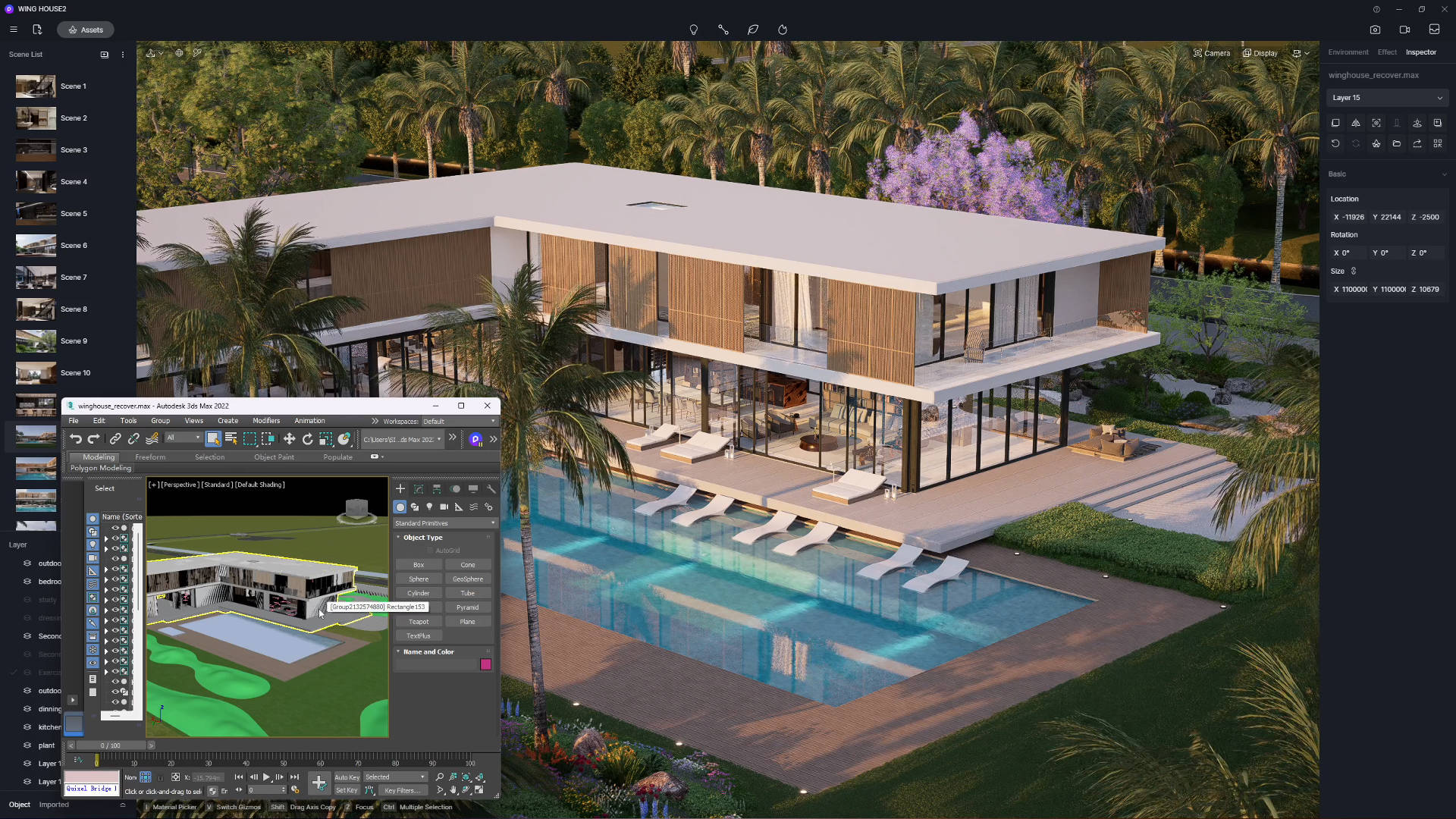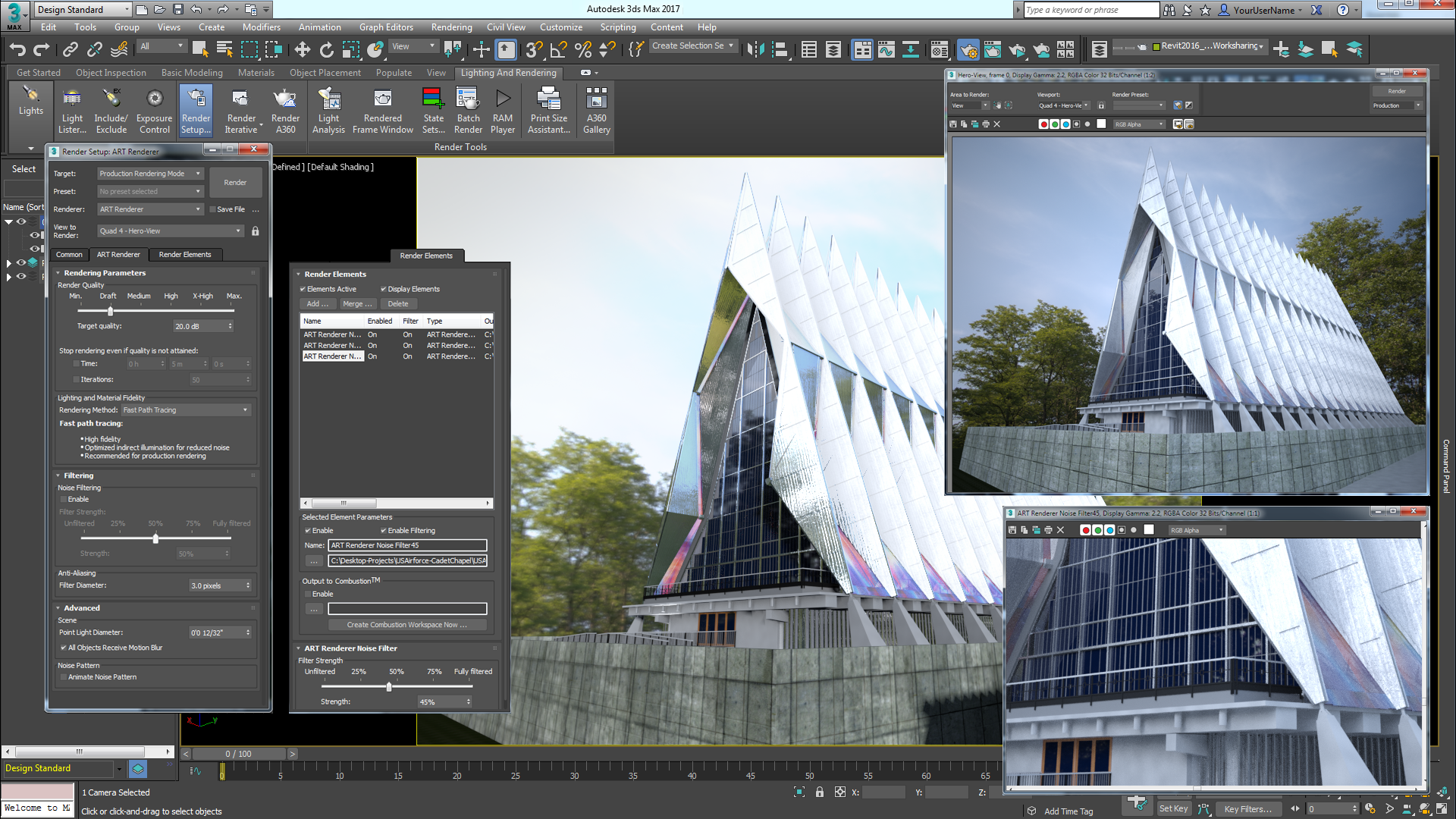If you’re rendering complex scenes in 3ds Max, the bottleneck isn’t your creativity—it’s render time. A 3ds Max render farm lets you trade idle waiting for parallel compute, turning overnight renders into coffee-break tasks and keeping clients off your back.
Below is a no-nonsense playbook you can hand to your team and actually use.
Why a render farm (and not “a bigger PC”)?
- Parallelism beats brute force. Adding one monster GPU or CPU helps a bit; adding hundreds of nodes helps predictably. Farms scale linearly for most stills/animation workloads and remove the single-workstation point of failure.
- Cash flow vs. capex. You pay only for the compute you use. That’s healthier for studios that have spiky project loads and don’t want hardware aging on the shelf.
- Operational sanity. Queue jobs, sleep, wake up to frames. If something fails, you re-queue just the bad frames. Meanwhile, your workstation stays free for look-dev.
How to decide if your project belongs on a farm?
Use this simple screen:
- >120 total render hours estimated on your workstation.
- Deadline < 5 days or a client who “might want changes.”
- Shots > 5 cameras or an animation with many passes.
- Look-dev is locked (you’re done discovering surprises at render time).
If you hit 2+ of the above, a farm will likely save time and money.
Back-of-napkin math you can trust
- Estimate job size
Total Frames = Shots × Frames/Shot
Time/Frame (min) = median of your test renders
Total Work (node-minutes) = Total Frames × Time/Frame
- Farm wall-clock time
Wall Time ≈ (Total Work) ÷ (Active Nodes)
(Ignore small overhead; on mature farms it’s negligible.)
- Cost sanity check
If (farm cost) ≤ (internal time saved × your hourly rate), you use the farm. If not, keep it local.
3ds Max setup checklist (do this or you’ll chase ghosts)
- Freeze versions: 3ds Max, render engine, and all plugins. Match farm versions.
- Consolidate assets: Use Max’s Archive or a relinker; keep textures in relative paths.
- Determinism: Lock random seeds (hair, scattering, noise). Farms highlight nondeterminism brutally.
- Textures & formats: Use lossless or high-quality compressed. Avoid exotic codecs that need system-level installs.
- Output plan: One beauty, named passes, or EXR multilayer? Decide now; change later = re-render.
Render engine notes that actually matter
- V-Ray / Corona: Stable at scale. Good denoising pipelines. Mind UHD cache/irradiance caching rules if you still use them.
- Redshift / Arnold: Great for heavy scenes; watch out for GPU VRAM cliffs (texture budgets matter more than you think).
Tip: Don’t mix different output resolutions across cameras in one animation job. Split those into separate submissions to avoid farm-side constraints.
Workflow: from 3ds Max to first frames in minutes
- Install the farm connector (submitter/bridge app).
- Scene validation: The connector should check missing assets, unsupported maps, bad paths. Fix red flags before upload.
- Define jobs per logical unit:
- Animations → per shot or per render layer.
- Stills → per camera, or bundle if identical settings.
- Set priorities & dependencies: Render masks/cryptomattes first if your comp pipeline depends on them.
Warm-up run: Submit 1% of frames (or low res) to verify lighting/passes/denoise. Then scale to full.
Common failure patterns (and how to avoid them)
- “It worked here.” You used a local script/plugin that isn’t on the nodes. Package custom scripts or switch to supported equivalents.
- Network paths hard-coded. Use relative paths or UNC paths the farm can reach.
- Random flicker in animations. Non-locked seeds, inconsistent cache usage, or mixing render settings. Standardize across shots.
- VRAM crashes on GPU farms. Trim textures, reduce subdivision, or move that shot to CPU nodes.
Cost control that doesn’t cripple quality
- Resolution staging: Approve at half res + aggressive denoise, then render finals.
Adaptive sampling: Most engines let you cap max samples and rely on denoise for grainy tails. - Targeted re-renders: Re-render problem ranges only; don’t nuke the whole shot.
- Use farm tiers wisely: Reserve “priority” instances for client-critical shots; queue the rest on standard nodes.
Security & compliance (clients will ask)
- Data in transit: Encrypted uploads by default.
- Data at rest: Short retention, purge on completion, project-scoped access.
- Confidentiality: Signed NDAs on request.
If your client is enterprise, get written answers for the above before you upload a frame.
When your workstation is still the right call
- Tiny stills where render time is minutes, not hours.
- Look-dev loops where you change lighting/materials every 10 minutes.
- Non-deterministic sims (unless you farm the sim cache first).
Where GarageFarm.NET fits?
For studios and freelancers looking for a mature 3ds Max render farm with wide engine support and a straightforward connector, see GarageFarm.NET’s 3ds Max page.
It supports popular engines like V-Ray, Corona, Redshift, and FStorm, along with industry-standard plugins, and is built to handle both stills and large animation queues.
New accounts receive free starting credits, which is the easiest way to run a warm-up test without committing budget.


